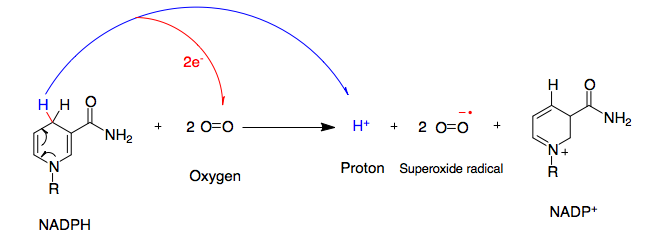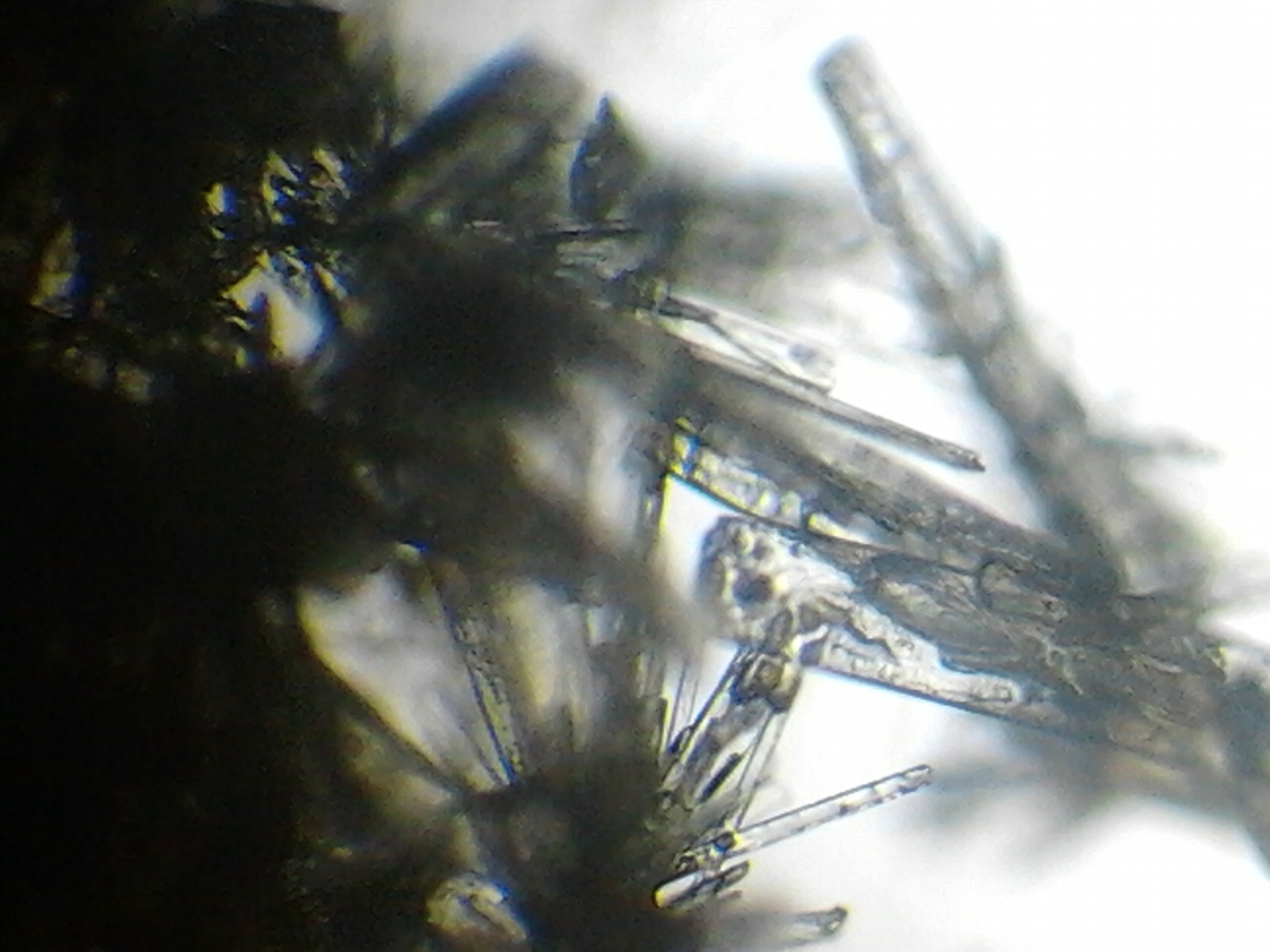|
Apocynin
Apocynin, also known as acetovanillone, is a natural organic compound structurally related to vanillin. It has been isolated from a variety of plant sources and is being studied for its variety of pharmacological properties. History Apocynin was first described by Oswald Schmiedeberg, a German pharmacologist, in 1883 and was first isolated by Horace Finnemore, in 1908, from the root of Canadian hemp ('' Apocynum cannabinum''). At the time, this plant was already used for its known effectiveness against edema and heart problems. In 1971, apocynin was also isolated from ''Picrorhiza kurroa'', a small plant that grows at high altitudes in the western Himalayas. ''P. kurroa'' was used for ages as a treatment for liver and heart problems, jaundice, and asthma. In 1990, Simons et al. isolated apocynin to a pharmacologically useful level using an actively guided isolation procedure. Apocynin's observed anti-inflammatory capabilities proved to be a result of its ability to selectively ... [...More Info...] [...Related Items...] OR: [Wikipedia] [Google] [Baidu] |
NADPH Oxidase
NADPH oxidase (nicotinamide adenine dinucleotide phosphate oxidase) is a membrane-bound enzyme complex that faces the extracellular space. It can be found in the plasma membrane as well as in the membranes of phagosomes used by neutrophil white blood cells to engulf microorganisms. Human isoforms of the catalytic component of the complex include NOX1, NOX2, NOX3, NOX4, NOX5, DUOX1, and DUOX2. Reaction NADPH oxidase catalyzes the production of a superoxide free radical by transferring one electron to oxygen from NADPH. : Types In mammals, NADPH oxidase is found in two types: one in white blood cells (neutrophilic) and the other in vascular cells, differing in biochemical structure and functions. Neutrophilic NADPH oxidase produces superoxide almost instantaneously, whereas the vascular enzyme produces superoxide in minutes to hours. Moreover, in white blood cells, superoxide has been found to transfer electrons across the membrane to extracellular oxygen, while in vascula ... [...More Info...] [...Related Items...] OR: [Wikipedia] [Google] [Baidu] |
Vanillin
Vanillin is an organic compound with the molecular formula . It is a phenolic aldehyde. Its functional groups include aldehyde, hydroxyl, and ether. It is the primary component of the extract of the vanilla bean. Synthetic vanillin is now used more often than natural vanilla extract as a flavoring in foods, beverages, and pharmaceuticals. Vanillin and ethylvanillin are used by the food industry; ethylvanillin is more expensive, but has a stronger note. It differs from vanillin by having an ethoxy group (−O−CH2CH3) instead of a methoxy group (−O−CH3). Natural vanilla extract is a mixture of several hundred different compounds in addition to vanillin. Artificial vanilla flavoring is often a solution of pure vanillin, usually of synthetic origin. Because of the scarcity and expense of natural vanilla extract, synthetic preparation of its predominant component has long been of interest. The first commercial synthesis of vanillin began with the more readily available na ... [...More Info...] [...Related Items...] OR: [Wikipedia] [Google] [Baidu] |
Nitroapocynin
Nitroapocynin is a mono-nitrated form of apocynin. Synthesis Apocynin can be nitrated with sodium nitrate and acidic ionic liquid 1-butyl-3-methylimidazolium hexafluorophosphate in acetonitrile Acetonitrile, often abbreviated MeCN (methyl cyanide), is the chemical compound with the formula and structure . This colourless liquid is the simplest organic nitrile (hydrogen cyanide is a simpler nitrile, but the cyanide anion is not clas ... solvent. References {{Reflist Nitrobenzenes O-methylated phenols Vanilloids Aromatic ketones ... [...More Info...] [...Related Items...] OR: [Wikipedia] [Google] [Baidu] |
Diapocynin
Diapocynin is a dimer of apocynin. Synthesis Diapocynin is synthesized by the activation of apocynin with ferrous sulfate and sodium persulfate. Similar to apocynin, it is shown to have some beneficial effects against oxidative stress and reducing reactive oxygen species In chemistry, reactive oxygen species (ROS) are highly reactive chemicals formed from diatomic oxygen (). Examples of ROS include peroxides, superoxide, hydroxyl radical, singlet oxygen, and alpha-oxygen. The reduction of molecular oxygen () p .... References {{Reflist Vanilloids Aromatic ketones Catechols Dimers (chemistry) ... [...More Info...] [...Related Items...] OR: [Wikipedia] [Google] [Baidu] |
Vanilloids
The vanilloids are compounds which possess a vanillyl group. They include vanillyl alcohol, vanillin, vanillic acid, acetovanillon, vanillylmandelic acid, homovanillic acid, capsaicin, etc. Isomers are the isovanilloids. : A number of vanilloids, most notably capsaicin, bind to the transient receptor potential vanilloid type 1 (TRPV1) receptor, an ion channel which naturally responds to noxious stimuli such as high temperatures and acidic pH. This action is responsible for the burning sensation experienced after eating spicy peppers. Endogenously generated chemicals that trigger the TRPV1 channel of the vanilloids class are referred to as endovanilloids including anandamide, 20-Hydroxyeicosatetraenoic_acid(20-HETE) ,N-Arachidonoyl_dopamine (NADA) and N-oleoyl-dopamine. : Outside the food industry vanilloids such as nonivamide are used commercially in pepper spray formulations. Other vanilloids which act at TRPV1 include resiniferatoxin Resiniferatoxin (RTX) is a natura ... [...More Info...] [...Related Items...] OR: [Wikipedia] [Google] [Baidu] |
Amyotrophic Lateral Sclerosis
Amyotrophic lateral sclerosis (ALS), also known as motor neuron disease (MND) or Lou Gehrig's disease, is a neurodegenerative disease that results in the progressive loss of motor neurons that control voluntary muscles. ALS is the most common type of motor neuron diseases. Early symptoms of ALS include stiff muscles, muscle twitches, and gradual increasing weakness and muscle wasting. ''Limb-onset ALS'' begins with weakness in the arms or legs, while ''bulbar-onset ALS'' begins with difficulty speaking or swallowing. Half of the people with ALS develop at least mild difficulties with thinking and behavior, and about 15% develop frontotemporal dementia. Most people experience pain. The affected muscles are responsible for chewing food, speaking, and walking. Motor neuron loss continues until the ability to eat, speak, move, and finally the ability to breathe is lost. ALS eventually causes paralysis and early death, usually from respiratory failure. Most cases of ALS (a ... [...More Info...] [...Related Items...] OR: [Wikipedia] [Google] [Baidu] |
Superoxide Dismutase 1
Superoxide dismutase u-Zn'' also known as superoxide dismutase 1 or hSod1 is an enzyme that in humans is encoded by the ''SOD1'' gene, located on chromosome 21. SOD1 is one of three human superoxide dismutases. It is implicated in apoptosis, familial amyotrophic lateral sclerosis and Parkinson's disease. Structure SOD1 is a 32 kDa homodimer which forms a beta barrel (β-barrel) and contains an intramolecular disulfide bond and a binuclear Cu/Zn site in each subunit. This Cu/Zn site holds the copper and a zinc ion and is responsible for catalyzing the disproportionation of superoxide to hydrogen peroxide and dioxygen. The maturation process of this protein is complex and not fully understood, involving the selective binding of copper and zinc ions, formation of the intra-subunit disulfide bond between Cys-57 and Cys-146, and dimerization of the two subunits. The copper chaperone for Sod1 (CCS) facilitates copper insertion and disulfide oxidation. Though SOD1 is synthesized in t ... [...More Info...] [...Related Items...] OR: [Wikipedia] [Google] [Baidu] |
Glial Cell
Glia, also called glial cells (gliocytes) or neuroglia, are non-neuronal cells in the central nervous system (brain and spinal cord) and the peripheral nervous system that do not produce electrical impulses. They maintain homeostasis, form myelin in the peripheral nervous system, and provide support and protection for neurons. In the central nervous system, glial cells include oligodendrocytes, astrocytes, ependymal cells, and microglia, and in the peripheral nervous system they include Schwann cells and satellite cells. Function They have four main functions: *to surround neurons and hold them in place *to supply nutrients and oxygen to neurons *to insulate one neuron from another *to destroy pathogens and remove dead neurons. They also play a role in neurotransmission and synaptic connections, and in physiological processes such as breathing. While glia were thought to outnumber neurons by a ratio of 10:1, recent studies using newer methods and reappraisal of historical quant ... [...More Info...] [...Related Items...] OR: [Wikipedia] [Google] [Baidu] |
Collagen-induced Arthritis
Collagen-induced arthritis (CIA) is a condition induced in mice (or rats) to study rheumatoid arthritis. CIA is induced in mice by injecting them with an emulsion of complete Freund's adjuvant and type II collagen Type II collagen is the basis for hyaline cartilage, including the articular cartilages at joint surfaces. It is formed by homotrimers of collagen, type II, alpha 1 chains. It makes up 50% of all protein in cartilage and 85–90% of collagen of .... In rats, only one injection is needed, but mice are normally injected twice. References Animal testing Arthritis Collagens {{disease-stub ... [...More Info...] [...Related Items...] OR: [Wikipedia] [Google] [Baidu] |
Chronic Obstructive Pulmonary Disease
Chronic obstructive pulmonary disease (COPD) is a type of progressive lung disease characterized by long-term respiratory symptoms and airflow limitation. The main symptoms include shortness of breath and a cough, which may or may not produce mucus. COPD progressively worsens, with everyday activities such as walking or dressing becoming difficult. While COPD is incurable, it is preventable and treatable. The two most common conditions of COPD are emphysema and chronic bronchitis and they have been the two classic COPD phenotypes. Emphysema is defined as enlarged airspaces ( alveoli) whose walls have broken down resulting in permanent damage to the lung tissue. Chronic bronchitis is defined as a productive cough that is present for at least three months each year for two years. Both of these conditions can exist without airflow limitation when they are not classed as COPD. Emphysema is just one of the structural abnormalities that can limit airflow and can exist without ai ... [...More Info...] [...Related Items...] OR: [Wikipedia] [Google] [Baidu] |



